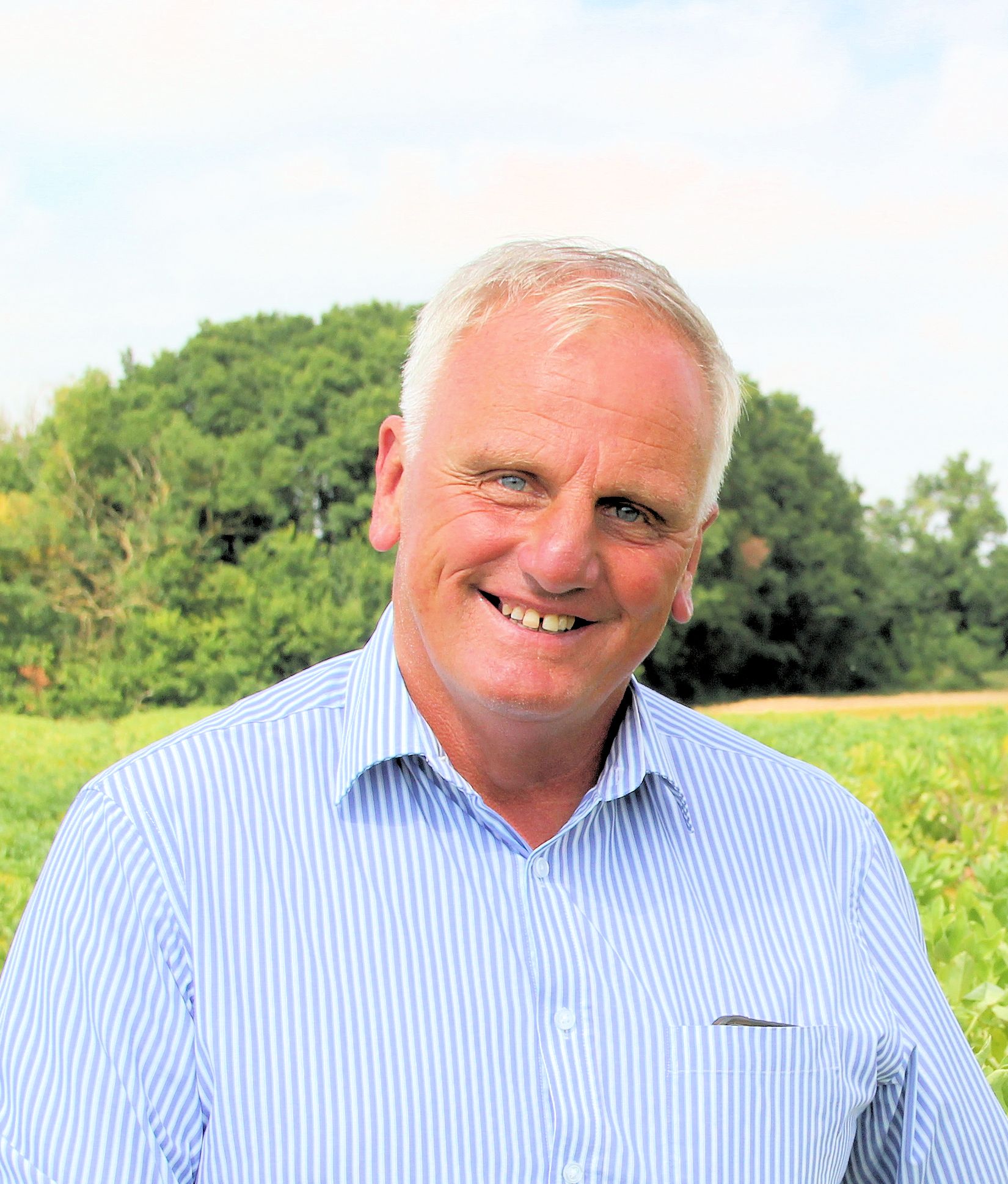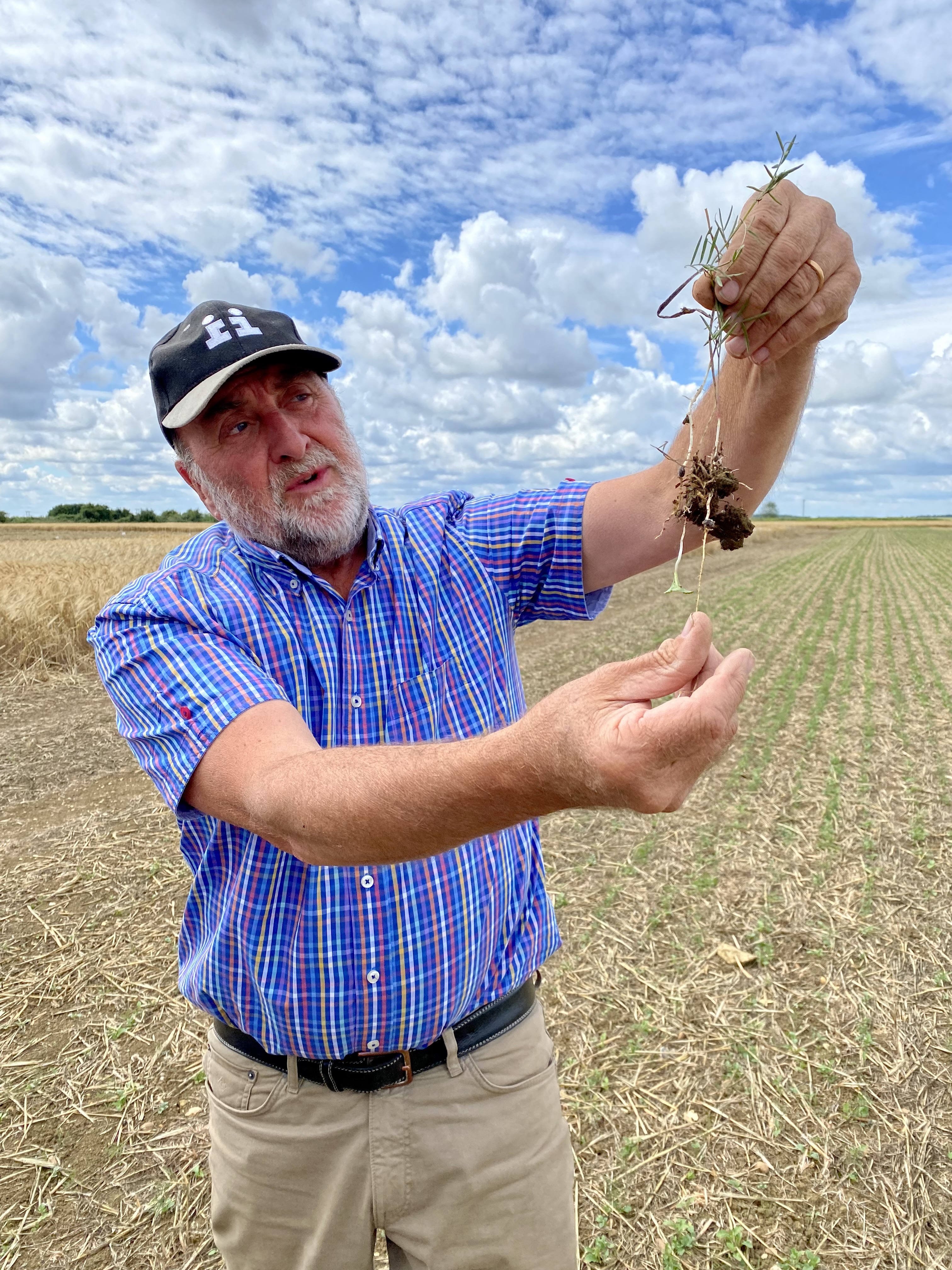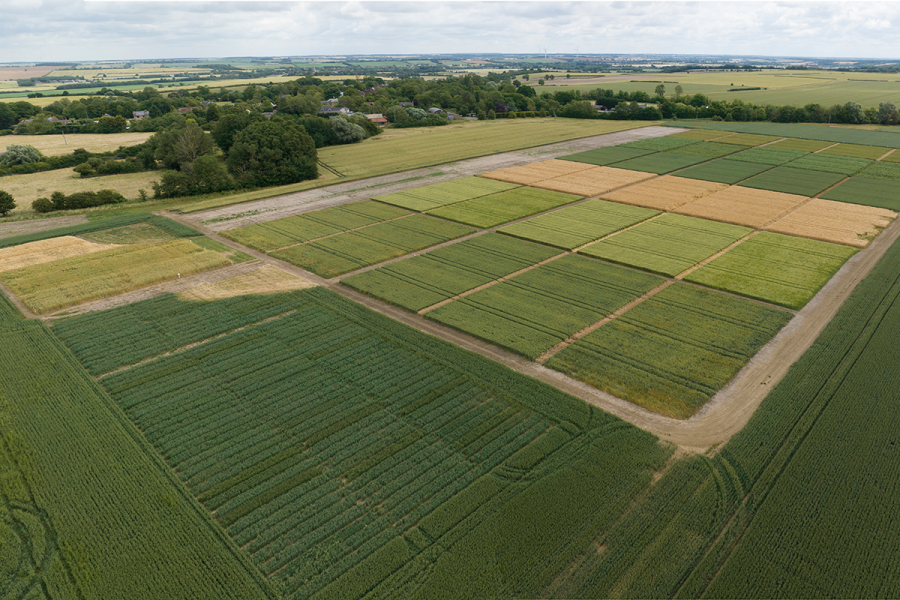More than two decades of blackgrass trials at Agrii’s Stow Longa research centre suggest that only by taking a fully integrated approach will growers succeed in tackling this problem weed.
We should never rest on our laurels as we did with Atlantis, nor should we discount a means of control based on an ideological view of how to farm.
By Rob Jones
A recognition that cultural control measures would eventually surpass formulated herbicides in controlling blackgrass led Agrii to initiate what has become the longest-running distributor R&D weed control trial in the UK. Over the years, the learnings have been shared with those facing blackgrass challenges of their own.
After 22 years, the overriding conclusion is that no single measure will deliver the high-level control needed to bring about a sustained reduction in the weed population. It requires a truly integrated approach, explains Colin Lloyd, Agrii’s head of agronomy who initiated the project.
“The skill is in bringing it all together. It’s not a case of simply following a prescribed course of actions,” he says.

The Agrii experience is that successful blackgrass control comes from adopting an integrated approach across the rotation, says Colin Llloyd.
In the early 2000s it was relatively easy to achieve a high level of blackgrass control – a November application of Atlantis (iodosulfron-methyl-sodium+ mesosulfuron-methyl) would regularly take out upwards of 90% of the population.
After several years of selection pressure this seemingly reliable control began to wane and by 2012, herbicide control levels in the trials at Stow Longa had fallen to less than 40%. This experience clearly demonstrates the short-term nature of relying on single site mode of action herbicides, but also the fallibility of a less integrated approach, says Colin.
“We should never rest on our laurels as we did with Atlantis, nor should we discount a means of control based on an ideological view of how to farm. The plough regularly delivers the single biggest reduction in populations of any management intervention, but alone it’s not enough to achieve the 97% control needed to reduce populations over the long-term,” he says.
The Agrii experience is that success comes from adopting an integrated approach across the rotation, with measures implemented where they’ll make the greatest contribution. The challenge to growers is to balance those that improve control with the pressure to optimise profitability, believes Colin.
“Growers should avoid wholesale changes and develop a strategy that reflects their situation. This may involve different cropping practices and the adoption of cover crops where the soil type and rotation allow. Staff training too shouldn’t be overlooked. Every member of the team needs to be involved if the changes are to have the desired impact.
“There are many trade-offs to consider,” he adds. “Achieving success is more a marathon than a sprint, but getting to grips with the problem is prioritised, the choices and decisions that follow are reasonably straightforward.”
Few actions are cost-free, but where a move is planned it can support other objectives such as a reduction in fixed costs, he reckons.
“Hybrid barley has a place in any strategy, especially where there’s a desire to transition to a direct drilling or a min-till system. It’s far more competitive compared with conventional winter barley, especially in a sub-optimal seedbed, and certainly compared with winter wheat – although the higher seed costs need to be considered.”
Spring cropping has repeatedly been shown to support better control by enabling greater use of glyphosate ahead of drilling. The trial at Stow Longa suggests spring oats have performed best in this situation followed by spring barley and spring wheat respectively. The principal consideration is that the gross margin returns can be less than the winter-cereal of choice, winter wheat, he says.
“This is the principal trade-off to consider. The financial rewards of spring crops may be less appealing, but a reduced autumn workload means smaller, often less expensive, machinery is enough to complete drilling. There is also less need for pre-emergence herbicides, all of which adds up to a saving in costs.”
Extending the rotation to include more crop species or to facilitate cover crops has benefits beyond a possible contribution to blackgrass control, he continues, but again such decisions should not be made lightly.
“Winter beans are often promoted as presenting a useful opportunity to control grassweeds, but their need for a deeper tilled seedbed is significant. Within the rotations trial at Stow Longa, the direct drilling/min-till area over the past six years has left the ground tight which has led to a poor crop.”
Extending the rotation to include more spring crops will also support control of other weeds, especially those that thrive in low-disturbance regimes, believes Colin.
“Growers need to be wary of exchanging one problem for another. At Stow Longa we have seen a worsening problem with soft and meadow bromes in the direct-drilled plots. It was made worse where a cover crop was sown straight after harvest. Our experience is that the soil should be left undisturbed for at least a month to allow these bromes to mature and germinate so they can be controlled.”
Similarly, abandoning inversion tillage practices or adopting cover crops is just as likely to make the blackgrass burden worse, at least in the short-term, he says. “Moving from a plough-based system to a low-disturbance drill and cover crops in one year resulted in poor straw distribution, lower establishment and worse blackgrass. The transition takes time, it is not a quick fix where grassweeds are an issue.
“Similarly, after six years of min-till/direct drill with catch/cover crops, the blackgrass population remained at elevated levels. In this situation, the plough provides an opportunity to achieve a re-set,” he adds.
Over the course of the eight-year trial, blackgrass populations have fluctuated in response to establishment practices. In year five of the six-year low disturbance/cover crop trial, the cultivation tines of the drill were dropped in about 25mm lower than previous years because the seedbed was tight for the introduction of catch/cover crops and needed it, according to Colin.
The blackgrass population subsequently soared to 376 ears/m2. By ploughing part of the plot the following year, the population was reduced to 39 ears/m2 compared with 349 ears/m2 in the continued direct-drilled section.
“Don’t be bound to an ideology. If it’s not working, try something different,” he concludes.
Cover crops versus cultivations, lessons learned

Getting cover crops to work hasn’t been easy on Stow Longa’s heavy clay soils, says Steve Corbett.
Agrii trials manager Steve Corbett believes this year may just prove the eight years of cover crop trials has all been worthwhile.
From the outset, performance has been measured using a range of variables, but top of the list has always been the net financial return. “Every aspect is measured. From soil biology, strength, and compaction, but also every input and operation are costed to enable a complete assessment,” says Steve.
The results show that cover crops contribute positive benefits on a range of levels, but at a direct and indirect cost to the grower.
“First, is the cost of the seed and the operations involved in establishing them. Where they fail and are re-sown, the cost is multiplied. Second, is the lower cash income that comes from poorer yields in the following crop,” says Steve.
“These need to be set against the non-cash benefits in soil structure and biology. These accumulate with time, but it will be for the grower to determine the order of priorities,” he says.
Over the trial, seven treatments have been investigated. In this time, Steve reckons to have produced just four good cover crops. The reasons for this largely stem from poor establishment, such as a lack of friable soil, a lack of seedbed moisture at drilling, and high insect pressure.
“This spring took two attempts to get the summer cover crop established in one part of the experiment. It’s a real art to establish them on these [heavy clay] soils,” he says.
The plough-based system has consistently delivered the best gross margin at an average of £620/ha/year, while the oil radish plot was the worst at 37% lower over the length of the project.
“This is where you have to set the priorities. The mustard and phacelia crop produced a gross margin £70-80/ha less than the deep cultivations/plough but is this a price worth paying for sustainability?” asks Steve.
Soil analyses reveal that the phacelia treatment has driven a discernible increase in organic matter at 5.1% compared with 4.2% for the cultivated plots.
With the support of the Centre for Ecology and Hydrology, changes in soil properties have been monitored. The results reflect a steady improvement in microbes considered beneficial amongst the cover crop plots. The challenge is learning how to preserve them.
“In the ploughed plots, levels of beneficial microbes are in decline while the opposite is the case for the cover crop plots. The question these finding pose is, if you plough a long-term non-cultivated field – perhaps because of blackgrass – does the decline continue into the next season?”
“We don’t know for sure, but we’ll continue to look into it. From the work so far, I suggest a balance between soil movement, cover crops, soil biology and economics on heavier soils is not quite as easy as some suggest,” adds Steve.
This article was taken from the latest issue of CPM. For more articles like this, subscribe here.




